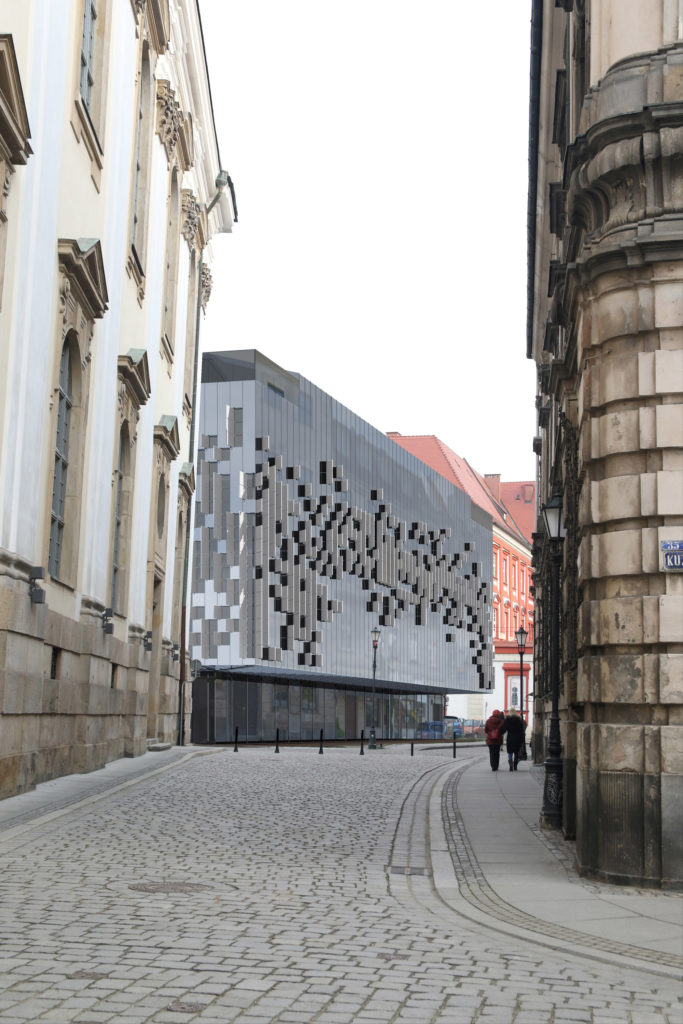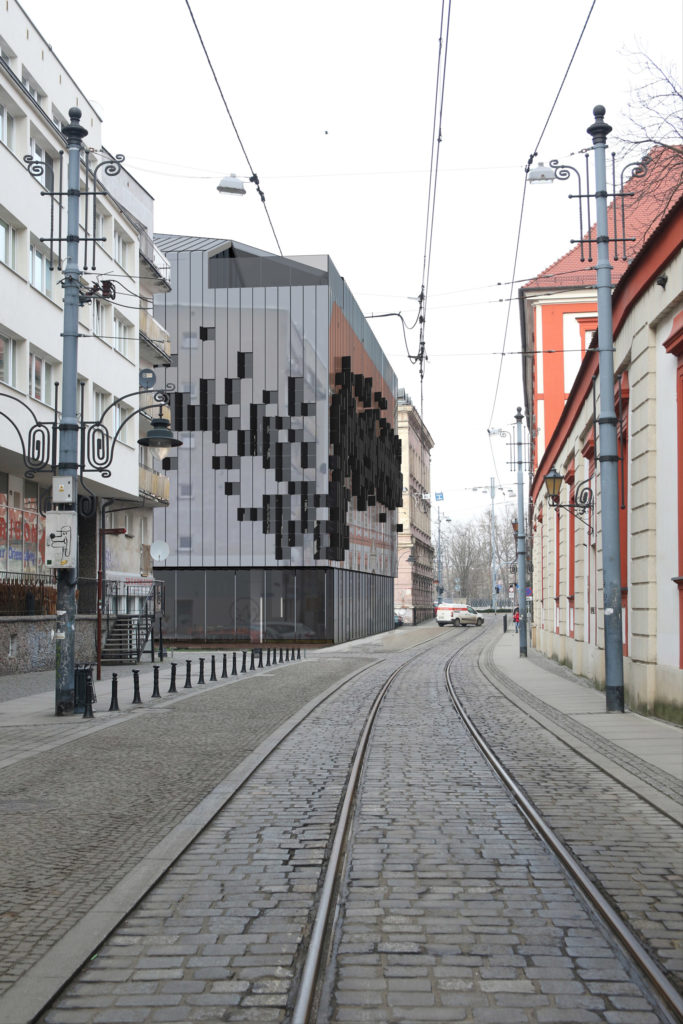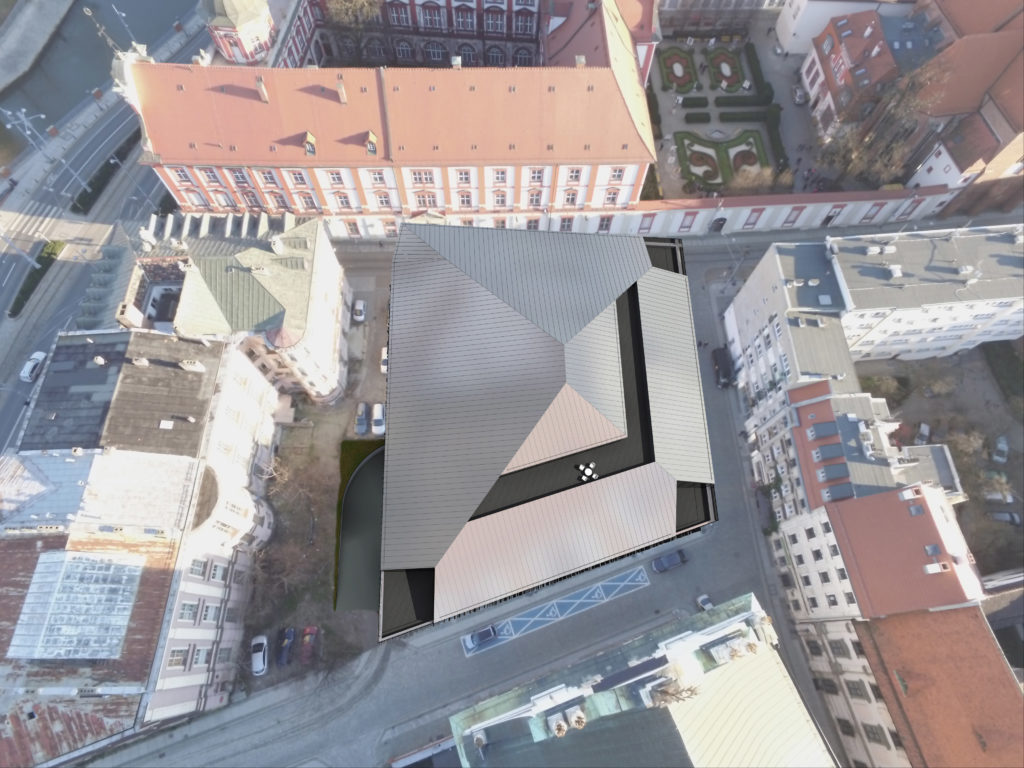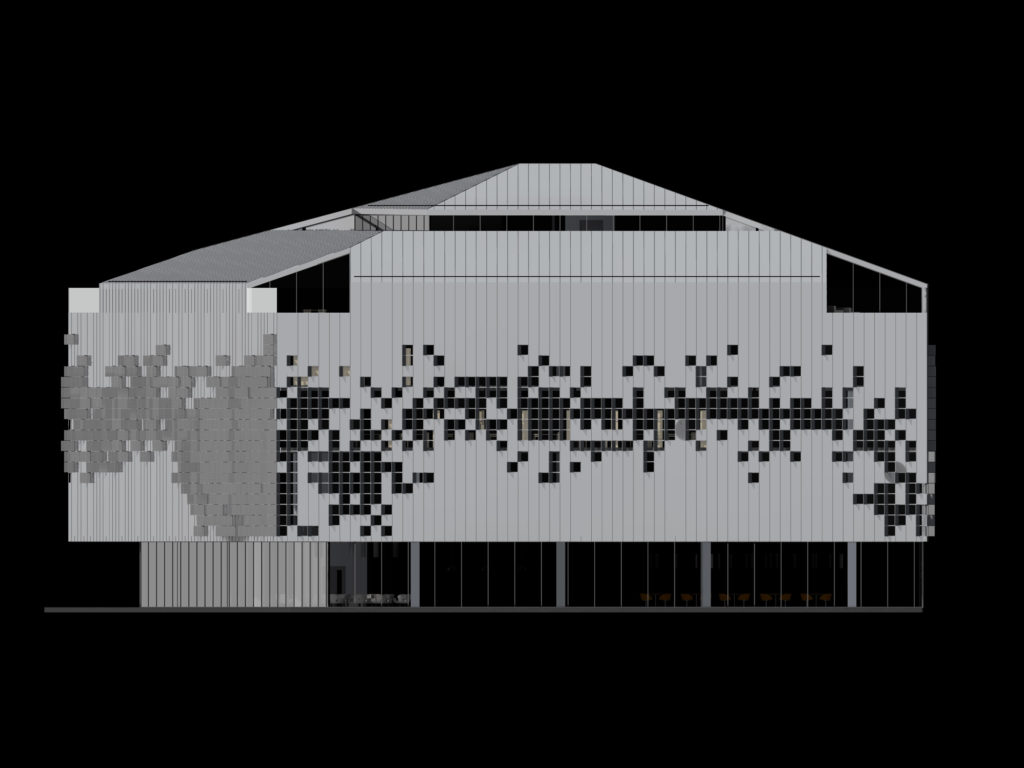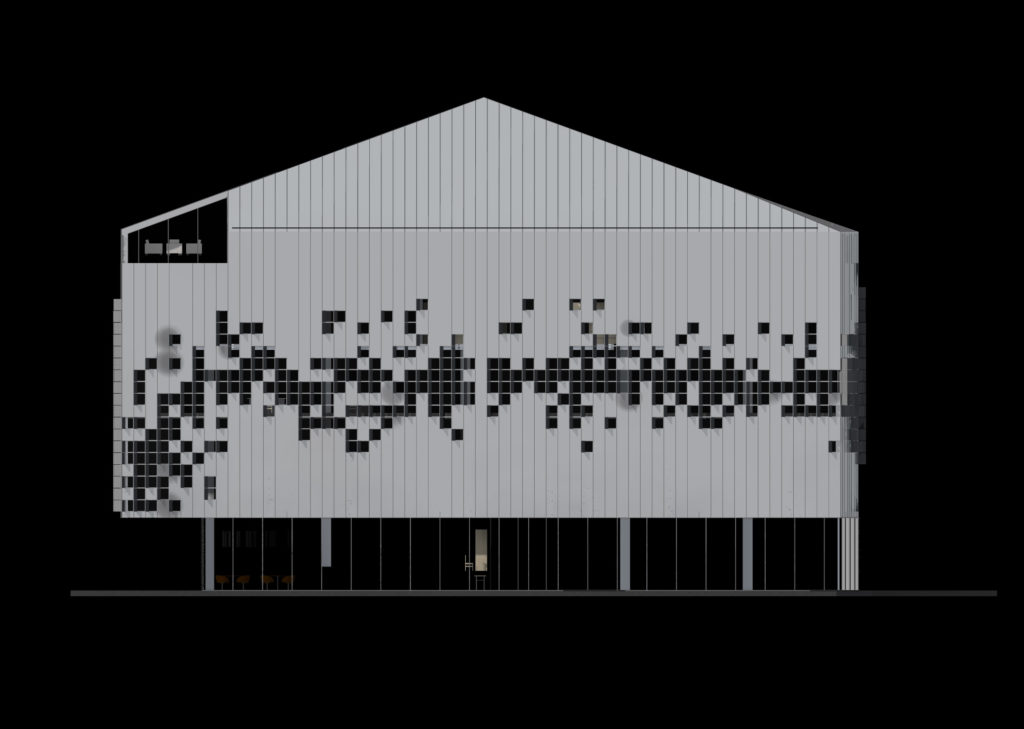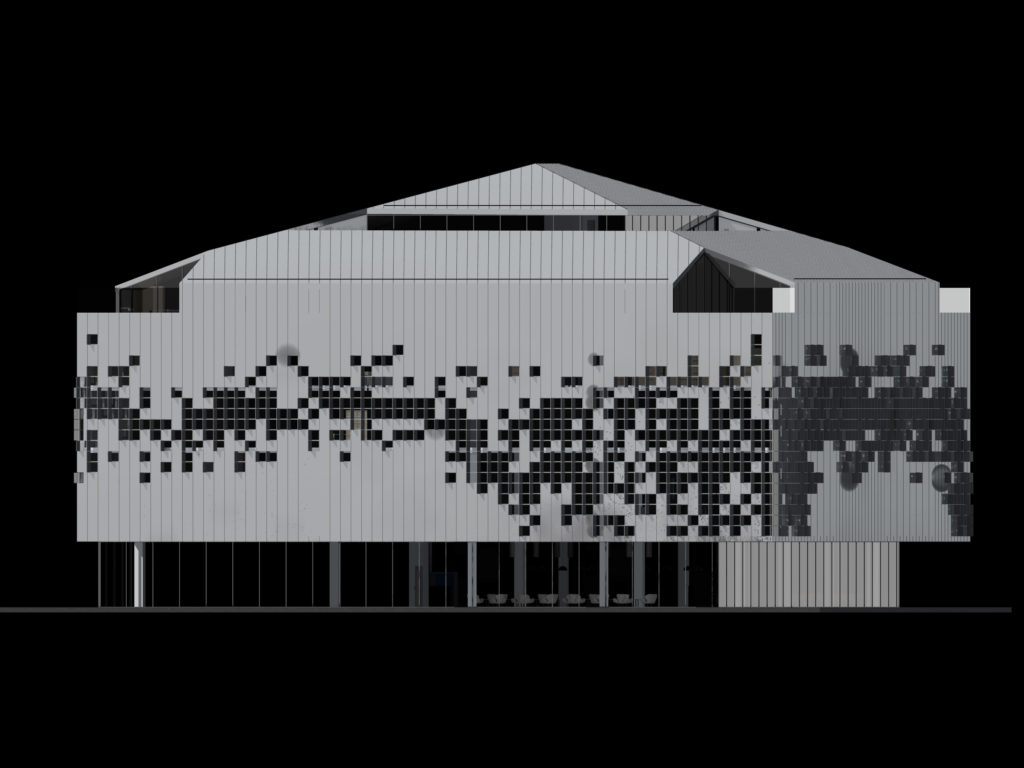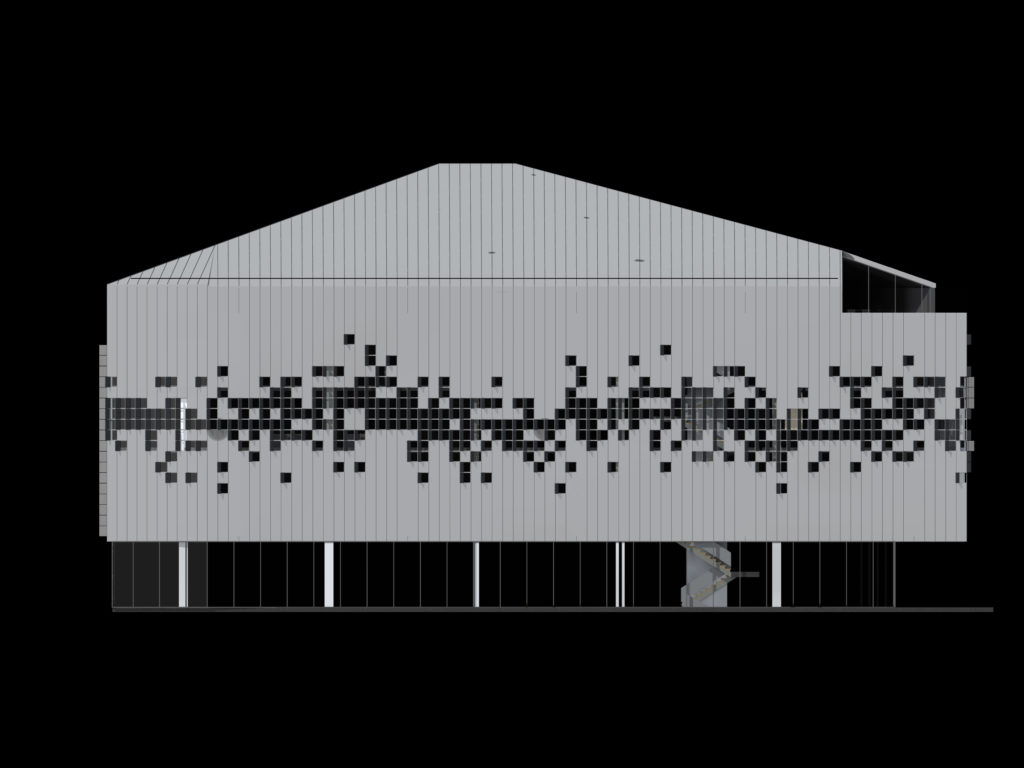The building, restrained in form, is a solid with a ground floor glazed on three sides. Its other floors have facades with a zinc sheet face with a vertical division of blocks joined into a standing seam, "passing" into the similarily finished roof surfaces. The structure not only shines with a sheet that oxidizes over time, but also reflects the facades of neighboring historical buildings. We treat it as a multi-faceted stone / jewel framed with the tissue of the old city, or set into it.
Window "perforations" appear in the metallic facades. The composition of the whole is based on the basic module 60cm x 60cm. The number and location of windows is dictated by the needs of providing additional natural light for the designated spaces of the Museum. An algorithm has been created that allows to optimize the natural lighting of the rooms that require it, which is the basis for the formation of the façade, in which, some modified elements also appear.
Additionally, natural lighting can be regulated with the use of perforated blendes made of zinc sheet, which constitute the shutters of all windows, except the ground floor. Such a solution, apart from its utilitarian value, allows for an infinite number of variants of the appearance of the facade of the building, thanks to the multitude of blende systems - from closed to 90-degree ones, multiplied by light and shade of different times of the day and year. From an open form flickering with facades planes, blendes and natural light during the day and shining with artificial light at night, to a restrained, shiny, closed structure on a sunny day and glittering at night with artificial lighting that seeps through the perforations of the shutters.
